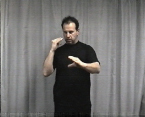1. Raluca Voinea: It seemed to me that the organizers of Prague Biennial have adopted a strategy of promotion quite aggressive. Was this just a created image or did the Prague Biennial succeed in bringing something totally different comparing to other contemporary art biennials?
Judit Angel: I don't think that the biennial in Prague was much different than others, anyway not so interesting as it self-promoted. There were all the media present, from painting to digital art, more than 200 works, among which there were a lot of good ones, but I saw at the same time a lot of weak works. I think the weakest zone was painting, and the best were video and photography. I appreciated the selections of some curators as Adam Budak (Poland). Michal Kolecek (Czech Republic), Ekaterina Lazareva (Russia), Marco Scotini (Italy), B+B (Great Britain). A pleasant discovery for me was the Azorro group, from Warsaw, practicing a sort of institutional critique full of humor, far from the heroic attitude of the '90s. In the same way, the young Romanian artist Dan Acostioaiei, with his project DERO, seen as an expression of the identity crisis of the Romanian society during the transition period, it's interesting that he was in the Czechs' selection. In fact, I liked this migrating outside the "national borders", that's what I have tried also, by inviting, together with the artists from Hungary, the Version group from Cluj - Nantes - Paris. The organizers considered the very low budget of the biennial as an advantage, but this didn't worked out under the given circumstances. The video movies, for example, were projected in a "corridor system", each video with his own small room, 20 pieces, each very close to the other, the noises were overlapping, and the over-saturation appeared, as the viewer didn't have the possibility of some perception breaks. I think that with more attention, more will and interest, a lot more and a lot better could have been done.
2. R.V.: As far as I know, the main location was the National Gallery; was the rest of the city integrated somehow in the biennial's circuit? Were there any works especially conceived to take into consideration the particularities of Prague?
J.A.: Except for the project of Plamen Dejanov for the cover of Flash Art magazine, and a Czech project at Goethe Institute in Prague, the National Gallery was in fact the unique space of the Biennial. I don't remember having seen any works that had taken into consideration Prague's context.
3. R.V.: Among the curators, a lot presented "national" selections (Hungary, China, Island, Italy…); were these a sort of correspondent for the national pavilions in Venice?
J.A.: No, it's not the same situation as in Venice, where the national representativeness is much more important. The situation in Prague resembles more the "stands" from the art fairs.
4. R.V.: The association you've done, between the peripheral and the atypical, seems to me as a change of accent, from the (cultural, geographical) relationship: center - periphery, on the relationship between the individual and a set of tendencies, not as much dominant, as "in fashion"; in the sense where the entire biennial chose to present, in a pluralist and eclectic way, a multitude of individualities (giving up the integrating look of the unique curator), how relevant was the concept under which this situated itself?
J.A.: Yes, indeed, I did change the accent. Generally, the proposed issues of the biennials are not respected, and the theme of center and periphery which this biennial adopted seemed to me too "used'. Still, I wanted to remain in the area of discussion, that's why I preferred speaking about "atypical" artists, who become interesting because they escape the trends where they could be easily framed. For example, a lot of young artists in Hungary rediscovered sculpture - post-minimal, models, etc. - but no one put it in discussion so radically as the group Little Warsaw, who decided to re-vitalize firstly the social function of sculpture in the public space, then the three-dimensional object in itself. As far as I noticed, nobody was preoccupied directly with the issue of center and periphery.
5. R.V.: What exhibition are you preparing now?
J.A.: Apart from Prague, in July I organized an exhibition in the series "Balkan Konsulat" in Graz, and in August the exhibition "Poesis. The Everyday Differently" at Mucsarnok in Budapest. Three exhibitions in three months was quite a lot, I have to reload for a time. A new area of interest to me is the artistic documentary.













